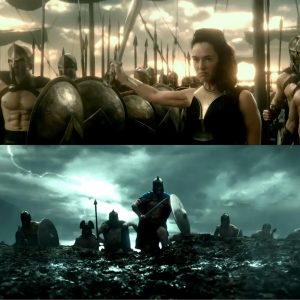300: Rise of an Empire (2014), directed by Noam Murro, is a visually stunning and action-packed continuation of the 300 saga. Set during the Battle of Artemisium, the film focuses on the heroic leadership of Themistocles and the brutal clash between the Greek city-states and the Persian Empire, led by the ruthless King Xerxes.

The film follows Themistocles (Sullivan Stapleton), the Athenian general who leads his fleet in a desperate battle against the overwhelming Persian forces. Determined to protect Greece, Themistocles must unite the fragmented Greek states to face the growing power of Persia. Meanwhile, Artemisia (Eva Green), the fierce Persian commander, adds a personal vendetta to the conflict, driving her ruthless pursuit of victory.

A key highlight of 300: Rise of an Empire is its breathtaking visual style. Known for its slow-motion action scenes, graphic battles, and striking CGI, the film delivers an immersive experience that draws viewers into the violent world of ancient warfare. While the over-the-top action and stylized visuals create a thrilling spectacle, some might find the exaggerated violence and CGI-heavy sequences detracting from the realism of the battles.

At its core, 300: Rise of an Empire is more than just an action film. It explores complex themes of leadership, sacrifice, and the high cost of war. Unlike the legendary Spartan king Leonidas from the first 300, Themistocles is motivated by the survival of his people, not personal glory. His strategic mind and determination to protect Greece set him apart from the more traditional heroic figures of ancient history.
The film also delves into the psychological impact of war, with both Xerxes and Artemisia driven by power and revenge. The contrast between Themistocles’ vision of unity and Xerxes’ thirst for domination adds moral complexity to the story. The film’s focus on loyalty, vengeance, and manipulation of emotions adds depth to the character motivations and enhances the emotional stakes of the war.

300: Rise of an Empire introduces naval warfare, a fresh element that adds a new layer to the 300 universe. The intense sea battles are as visually gripping and brutal as the land battles in the first film, offering a dynamic, high-stakes conflict that heightens the overall tension.
Although 300: Rise of an Empire may not have the same cultural impact as its predecessor, it remains a visually striking and action-packed war epic. With its focus on strategy, leadership, and the emotional cost of war, the film offers more than just spectacular action—it provides a thought-provoking exploration of heroism, sacrifice, and the price of vengeance in times of war.
